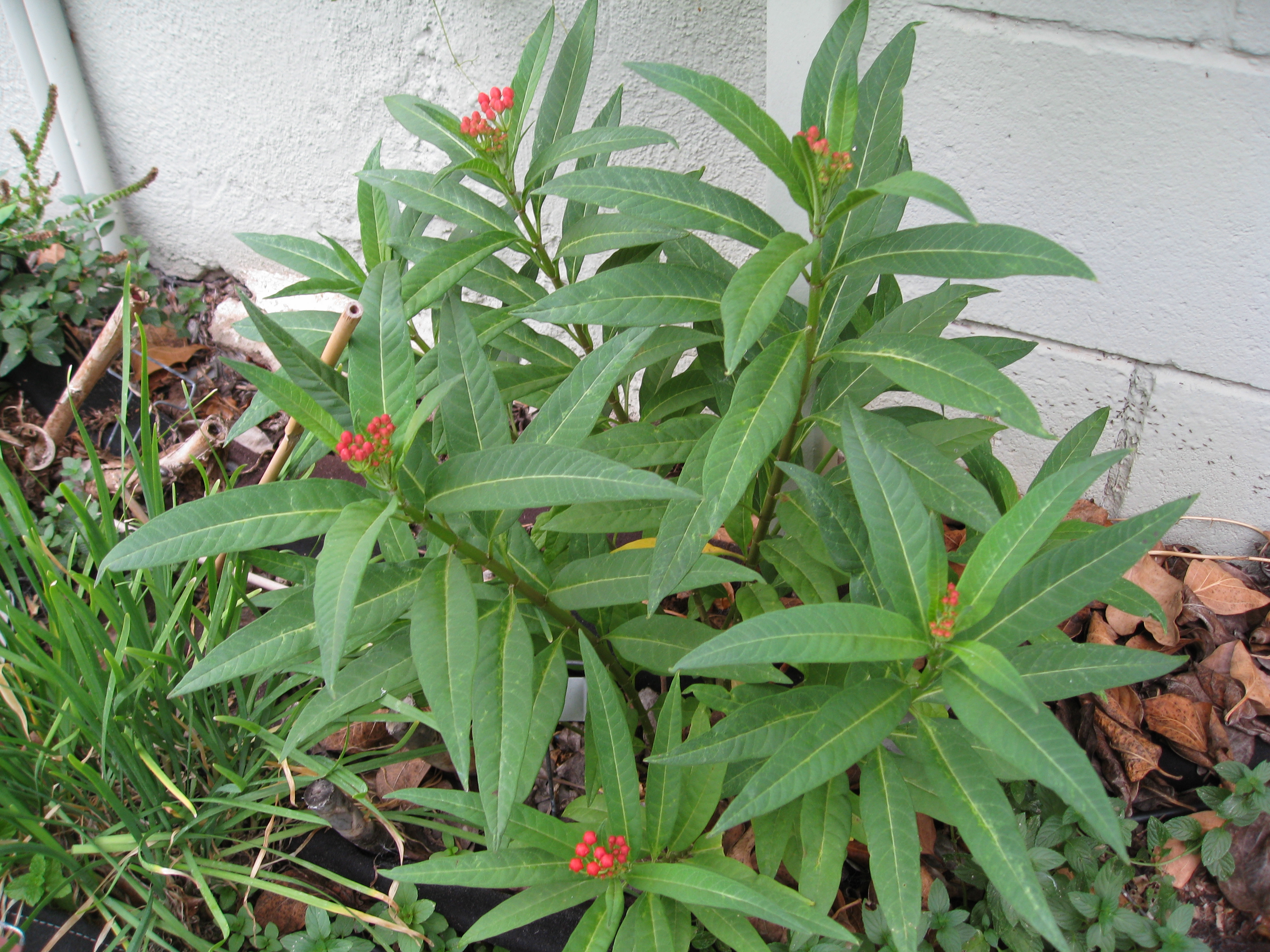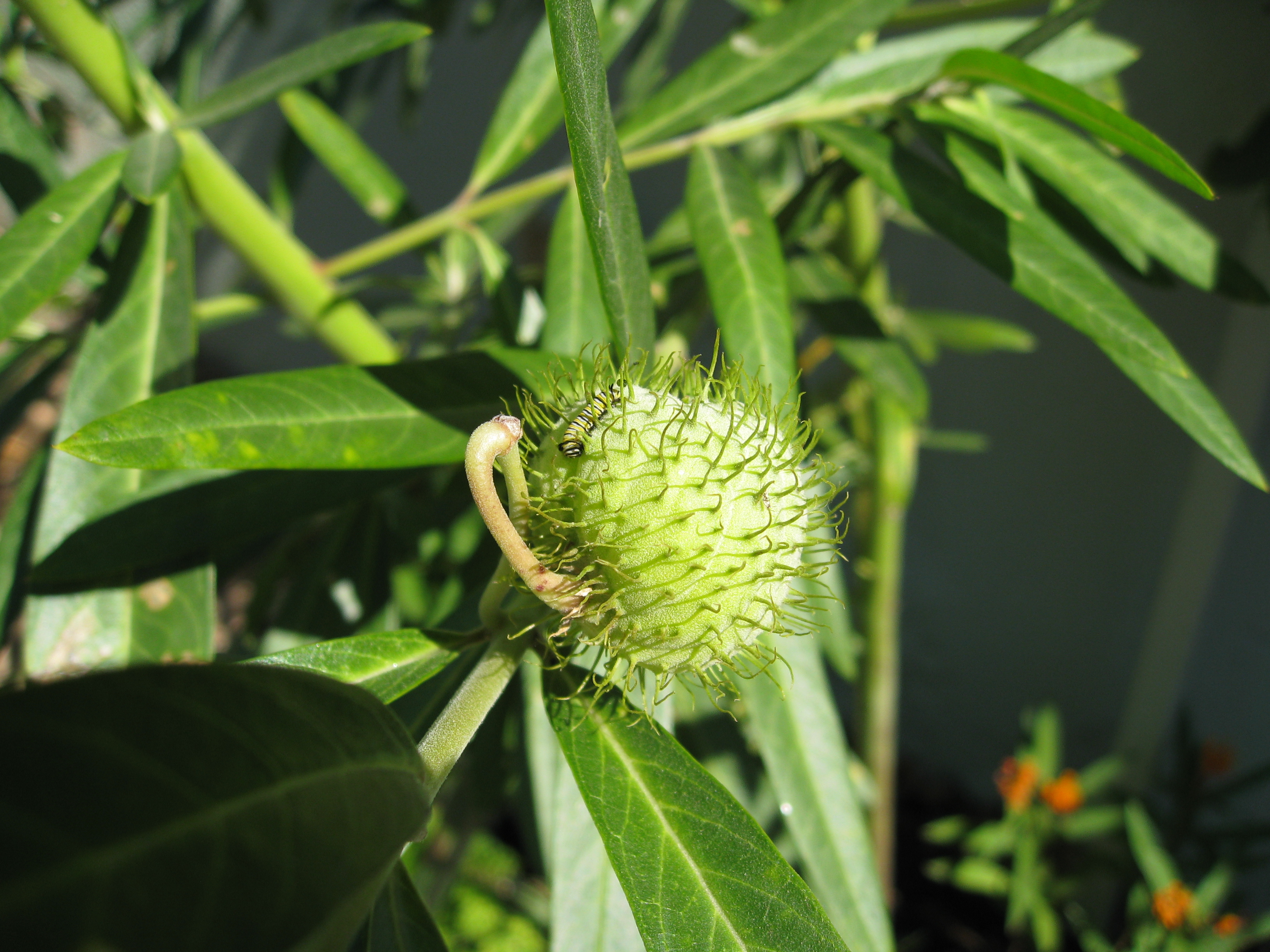A question came into Ask Gardenerd this week that I even asked myself last year:
“First year planting swamp milkweed for Monarchs – just had two butterflies exit their cocoons this morning. Had five plants this year – going big next year. Question – lots of info on how to get plants started but nothing on end of season maintenance. Should we cut back the stems on the existing plants or do we just leave them? Not sure what to do now that winter is approaching. Thanks – Bob”
You’re right, Bob, not many sites talk about what to do with the milkweed after it’s finished for the season. I ran into the issue last year when I was staring at an 8 ft. stalk of Asclepias Physocarpa, denuded after a season of successful Monarch habitation. What now? The answer is, it depends.
Annual vs. perennial – if the milkweed you are growing performs as an annual in your hardiness zone, like the Asclepias Physocarpa pictured above, you can scatter the open seed pods around the soil and cut the stalks down to the ground. The roots will dissolve over time and new plants will grow from dispersed seeds.
This milkweed was supposed to be perennial in my garden, but after waiting several months for new growth to appear (meanwhile other milkweeds were sprouting new leaves) I decided to cut it down. I left about 6″ of stem above ground, just in case it decided to leaf-out again, but it didn’t. Instead new sprouts came up from seeds I dispersed nearby.
You mentioned that you are growing swamp milkweed, Asclepias incarnata. Technically it is a perennial, but if you run into issues like I did (no leaves emerging) then re-seed and cut back old foliage.

Perennial milkweeds grow back year after year. They provide habitat for traveling Monarch butterflies.
If the milkweed is a perennial, like Asclepias curassavica (tropical milkweed) pictured above, you’ll notice tiny leaves growing from the base of the plant at some point after the upper stems have been consumed. Wait for that. Then cut back stems to the new growth and the plant will take off from there.
As a reminder, it is ideal to grow milkweeds that are native to your state if possible. In California, we have several native milkweeds, and seeds can be obtained from Theodore Payne Foundation for at least one of them.
MonarchWatch.org has a vendor list of seed sellers as well.
Thanks for writing in, Bob. Good luck with your butterfly garden!









I live in Southern California and have a variety of milkweed including the tropical milkweed, narrow leafed, and this yellow flowered one that looks similar to the tropical milkweed. They are all still sprouting new leaves and flowering. Due to the unusually warm weather this year in October, I discovered lots of monarch caterpillars yesterday. I took in about 15 babies yesterday and there are still many on the milkweed. When would I cut the milkweed since they are doing so well? Won’t the Monarchs not survive when they finally hatch since it will be fall/winter?
Hi Nicole, This blurb comes from the Monarch Joint Venture on BackToNatives.org:
“If you already have tropical milkweed in your garden, prune the milkweed stalks to about 6 inches in height during the fall and
winter months to discourage monarchs from establishing winter-breeding colonies*. Cutting back the milkweed will also help
to eliminate OE spores that may be present on the plant. Re-cut the milkweed every few weeks as leaves re-sprout. Tropical
milkweed might pose fewer problems in the northern monarch breeding range because it dies back naturally when it freezes.”
I also read to cut back after it stops flowering. Monarchs tend to interrupt their migration to hang out with topical milkweed, so we’re providing them with a pit-stop that’s not necessarily good for them. If you want to wait until the plant finishes flowering, and the caterpillars have moved on (which they most often do), then cut it down (or remove the tropical varieties), make that your plan.
Okay thank you, I appreciate the information! I want to stick to natives but its kind of hard to get rid of the tropical milkweed since the Monarch caterpillars seem to prefer them, and they are so hardy with the heat.
I live in Regina, Saskatchewan, Canada & purchased my Asclepias – Soulmate – seeds from a supplier in Ontario, Canada. Last year I planted the seeds, two plants grew to about 10-16 inches, no flowers. This year, both plants took off, growing to at least 48 inches tall, with tons of flowers. Unfortunately, no Monarch butterflies were to be seen in our yard, but the flowers definitely attracted several types of bees. The flowers produced endless pods containing seeds which I have harvested in abundance. Last fall I cut the plants down to about 6 inches above ground level & this year’s growth appeared to have come from the stems that were cut down plus new growth. The stems of this year’s plants are very hardy & strong, their appearance looking much like bamboo stalks. I did stake the stems this year as the weight of the flowers & then the pods were bending the stems which did interfere with other plants in the flower bed. I plan on cutting the stems down to about the 6″ height & hope they will come back next year just as hearty as they did this year. I am also planning on trying to dry this year’s stems that I cut off & hopefully they can be used much the same way that bamboo stalks are. Wish me luck.
Thanks for sharing, Darlene. Good luck!
I am now a Texas resident with lots of the same milkweed incarnata ‘soulmate’ that I bought as good sized seedlings. I have seven types of milkweed in my garden but this one is not a monarch favourite. It’s a fine nectar plant.
The bad news is you can’t reasonably expect any monarchs in Saskatchewan. I was a Master Gardener in Calgary for over 20 years and am now an Entomology specialist. There are over 100 native butterfly species in the province, but you’d need to get to Ontario to see large numbers, or occasionally in BC. The range map on the link is a good guide. I’m guessing the prairie sightings on the map are likely misidentified Viceroys.
I live in Zone 4, Southern B.C. This is my first year periennal milk weed, the bottom leaves have turned yellow, the plants are 3-4 ft. tall. Do I put stakes around them for the winter months as they are leaning over and how far back so I prune them? Thank you in advance.
Yvonne
Usually we prune back milkweed in the fall before winter hits. Cut back to 4″ above soil level. For now you can stake them to keep them from falling over.
Yvonne, Your milkweed will naturally die back to ground in Zone 4. You can keep the dead stalks in place until Feb or March for winter interest or for insects who might overwinter. Just clean up the dead stuff before the new growth starts coming back. You may also find that you need to treat is as an annual in BC. It may just get too cold. No harm trying. But just collect the seeds and save them to plant in late March or April.
I am in New Orleans. My milkweed is in a pot. I’d like to cut it back because it looks rough. Yellow leaves and no more flowers. It’s my first year with it. When should I cut it back and how far?
The rule of thumb is to cut back milkweed in winter to about 6″ above soil level. Many milkweed varieties sprout new growth on old stems after they flower. You could wait it out, or cut back now. It’s hard to know what will happen without knowing the specific variety you’re growing.
I have planted Butterfly Flowers – Asclepiade Incarnata. I greatly appreciate your info and advice. Many thanks